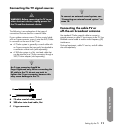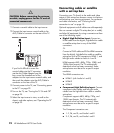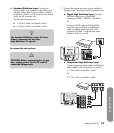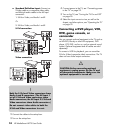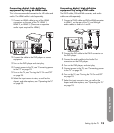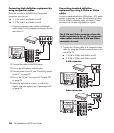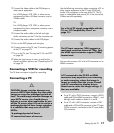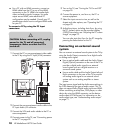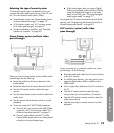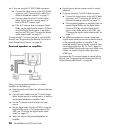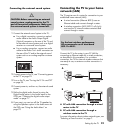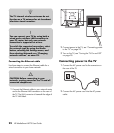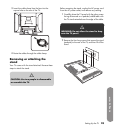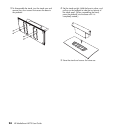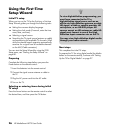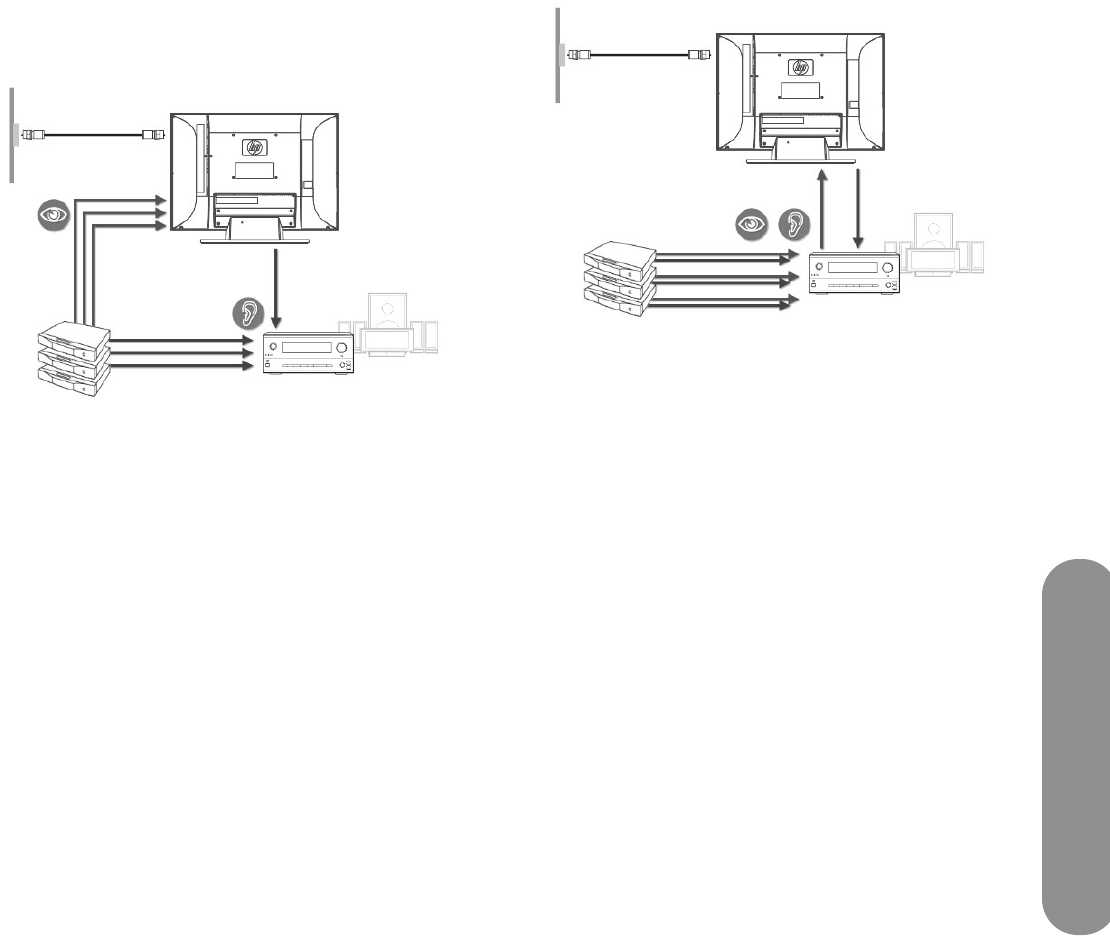
Setting Up the TV
Setting Up the TV 19
Selecting the type of sound system
The external sound system can determine how you
connect the video/audio input sources to the TV and
the TV to the external audio system. Select:
Home theater system; see “Home theater system
(without video pass-through)” on page 19.
A/V receiver system; see “A/V receiver system
(with video pass-through)” on page 19.
Powered speakers or amplifier; see “Powered
speakers or amplifier” on page 20.
Home theater system (without video
pass-through)
When you have a home theater system without video
pass-through, do the following:
Route the audio from all source devices to the
home theater.
Route the video from all source devices to the TV.
Use the TV remote control to select the input
source.
Use the home theater remote control to select the
audio input.
Use the source device remote control to control
playback.
If you are using the TV ANT/Cable connector:
Connect the signal source to the ANT/Cable
connector; see “Connecting the cable TV or
off-the-air broadcast antenna” on page 11.
Connect audio cables from the TV Audio
Output (either digital optical or analog stereo,
or both) to the home theater input.
If the home theater does not support Digital
Dolby, set the digital audio format to PCM by
using the Digital Audio option in the Audio
menu on the OSD; see “Choosing the digital
audio output mode” on page 71.
To program the TV universal remote to control all the
devices, see “Programming the Remote Control for a
Home Entertainment Device” on page 50.
A/V receiver system (with video
pass-through)
When you have an A/V receiver system with video
pass-through, do the following:
Route the audio and video from all source devices
to the A/V receiver.
For HDMI source devices, you may need to use a
separate digital audio cable in addition to the
HDMI cable.
Use a single video cable from the A/V receiver to
the TV.
Use the TV remote control to select the input
source where you connected the A/V receiver.
Use the A/V receiver remote control to select the
video source device.
Use the source device remote control to control
playback.



